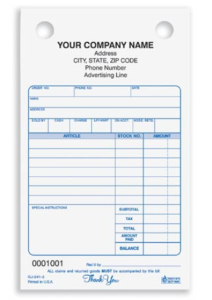A young relative of mine became engaged recently. Her mother, my sister, gave her an eternity band which had belonged to her husband’s mother.
I’m not trying to confuse you with relatives. I looked at the ring years ago under a loop and recall that the diamonds were about 35 pointers and fairly clean. I don’t remember much more than that, so I was no help at all when my sister called and said that the national chain to which my niece had taken the ring for cleaning had lost it.
As described by my niece, the take-in procedures at this chain – and believe me, you’d recognize the name – were shoddy, at the least. She did receive a receipt for the ring, but there was no real description. The number of diamonds or the size of the diamonds weren’t listed. The type of setting wasn’t described. All my niece had was a receipt.
The store acknowledges it lost her ring and offered her $4,000 to settle the claim. But, upon what basis does it arrive at that value? They lost the ring and the receipt doesn’t describe it. The $4000 is just as apt to be too much for the ring as it is apt to be too little. That’s because the store can’t prove or even suggest its value.
It’s nuts. And, for my niece and sister, just beyond frustrating.
 I really doubt the clerk who took in the ring stole it. The ring is beautiful, but certainly not worth the risk of jail time. I suspect the clerk was just sloppy and allowed an accident to occur such as carelessly tossing the envelope containing the ring into a wastebasket.
I really doubt the clerk who took in the ring stole it. The ring is beautiful, but certainly not worth the risk of jail time. I suspect the clerk was just sloppy and allowed an accident to occur such as carelessly tossing the envelope containing the ring into a wastebasket.
Accidents do happen. They shouldn’t. But they do. When they do, though, the client should be protected and you should be protected. That means you should have an accurate description of the item.
So, the real grievance here is the laziness of the take-in clerk who provided a receipt without details.
My niece’s fiancé is a lawyer and they’ve already filed a law suit against the chain.
As professional pearl and bead stringers, we are often asked to repair necklaces, bracelets and other jewelry. Please protect yourself and provide your client with a detailed receipt and keep a copy for your own records.
Please understand, it’s important that you NOT accept customer claims about the piece. For example, you should not describe the piece as “antique amber beads.” You should describe the piece as “Client says beads are antique amber.”
If the client objects, tell her you haven’t identified the stones, so can’t accept that they’re whatever she says they are. Tell her you don’t doubt that they are what she says they are, but that you cannot issue a receipt certifying this without additional tests and/or study. Most people will accept this. Then be sure to include a good description, including size, color and whether they’re graduated.
Back when I was running the gallery, digital wasn’t as ubiquitous as it is today. Today, I’d take a quick picture of the jewelry and keep it with the receipt which I would get the client to sign.
Whatever procedure you decide upon, please be sure to protect yourself. Also, be sure to follow the procedures you’ve decided upon. No one wants a lawsuit, but they can happen and often are the result of carelessness.
(There are plenty of forms available such as the one I’ve posted. You can pick up packages of these at office and jewelry supply stores. Using a pre-printed form, of course, is a signal of your professionalism.)

